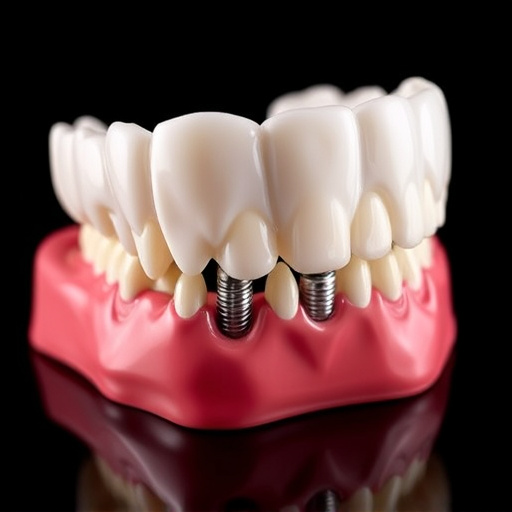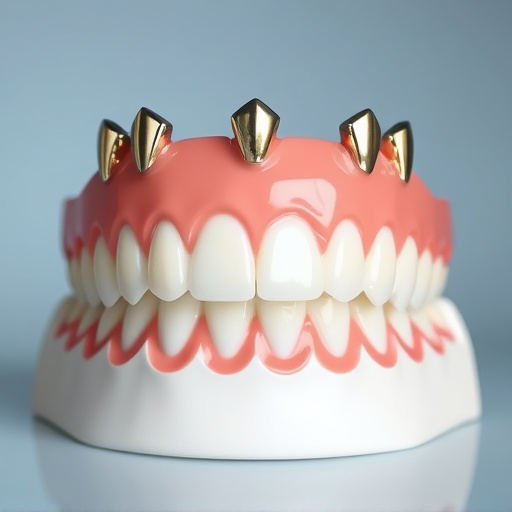Special needs dentistry requires a tailored approach addressing physical access, communication barriers, and emotional support for patients with disabilities. Creating sensory-friendly environments, adapting emergency care, and integrating calming design elements like soft lighting, play areas, and child-friendly aids improves patient comfort and reduces anxiety during procedures like wisdom tooth removal, fostering positive clinic associations.
Creating calming environments in special needs dentistry clinics is essential for providing a comfortable and stress-free experience. This article delves into understanding the unique requirements of special needs patients, designing spaces that foster calm and comfort, and implementing sensory strategies for stress reduction. By incorporating these elements, dental clinics can enhance patient care and make visits more manageable for both children and adults with special needs.
- Understanding Special Needs Patients' Unique Requirements
- Designing Spaces That Foster Calming and Comfort
- Implementing Sensory Strategies for Stress Reduction
Understanding Special Needs Patients' Unique Requirements

Understanding Special Needs Patients’ Unique Requirements
Special needs dentistry involves recognizing and addressing the distinct needs of patients with various disabilities. These requirements extend beyond conventional teeth cleaning and encompass a wide range of considerations, from physical access to communication methods and emotional support. Each patient’s experience is unique, demanding tailored care that respects their individual capabilities and challenges. For instance, patients with autism spectrum disorder may require sensory-friendly environments during procedures like wisdom tooth removal, aiming to reduce anxiety and ensure comfort.
Effective special needs dentistry also involves adapting emergency dental care services. Quick response times and compassionate, skilled professionals are crucial in addressing urgent oral health issues safely and effectively. By integrating these considerations into clinic design and operations, dentists can foster calming atmospheres that prioritize the well-being of all patients, regardless of their unique circumstances, ensuring they receive the quality care they deserve.
Designing Spaces That Foster Calming and Comfort

Creating calming environments is an art in special needs dentistry clinics, where every detail contributes to a child’s comfort and confidence. The design should be focused on creating a soothing atmosphere that reduces anxiety, which is often a significant barrier for children with special needs during dental procedures like wisdom tooth removal or emergency dental care. Incorporating soft lighting, warm colors, and natural elements can significantly impact the overall ambiance. For instance, using dimmable lighting allows for adjustments based on the child’s comfort level, while natural light from well-placed windows can enhance a sense of calm.
The layout should encourage a sense of control and minimize sensory overload. Creating designated play areas or calming stations with age-appropriate toys and books provides an outlet for children to de-escalate before or after dental procedures. Additionally, incorporating elements from cosmetic dentistry practices, such as colorful, child-friendly dental aids or playful decorations, can transform the space into a more inviting and less intimidating environment. This approach not only enhances the overall dental experience but also fosters a positive association with visiting the clinic.
Implementing Sensory Strategies for Stress Reduction

Creating calming environments is paramount in special needs dentistry clinics to ensure patients’ comfort and reduce stress during their visits. Implementing sensory strategies can significantly impact a patient’s overall experience. For instance, incorporating soft lighting, soothing music, and comfortable seating can help create a peaceful atmosphere. These simple measures can make a substantial difference for individuals with sensory sensitivities or anxiety related to dental procedures.
Incorporating tactile elements like weighted blankets or fidget toys can further alleviate stress by providing a sense of security and control. Additionally, offering choices in treatment options, such as selecting from various dental materials (including cosmetic fillings and dental implants), allows patients to feel involved and engaged, fostering a sense of autonomy that can help reduce anxiety. Regular dental cleanings should not be a daunting task but an opportunity for a positive experience through these sensory-focused approaches.
Creating calming environments in special needs dentistry clinics is not just a design choice; it’s a necessity that significantly enhances patient experiences. By understanding unique requirements, designing comforting spaces, and implementing sensory strategies, dental professionals can make visits less stressful and more enjoyable for patients with diverse needs. This approach not only improves patient care but also fosters a sense of security and comfort, ultimately contributing to better oral health outcomes in the special needs community.














